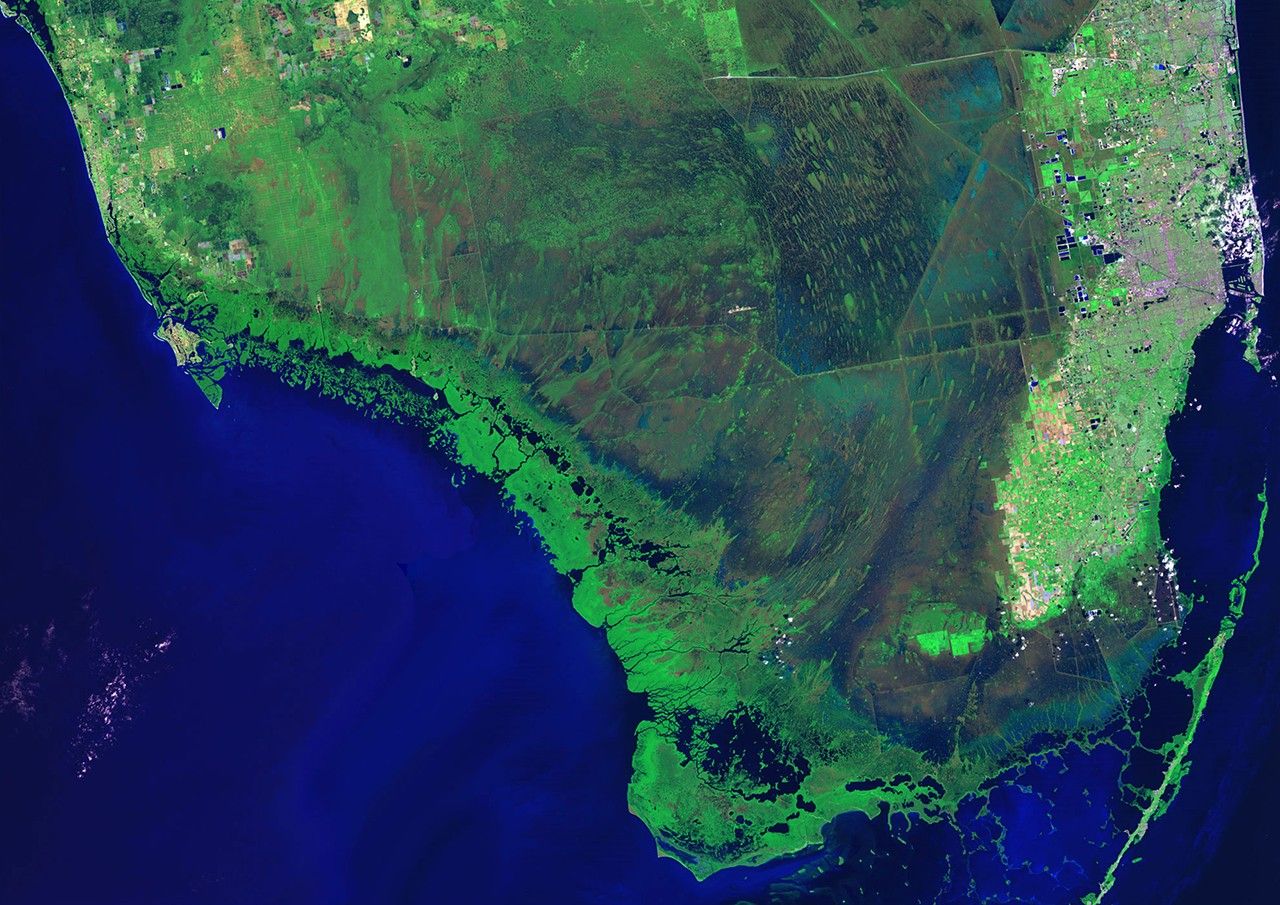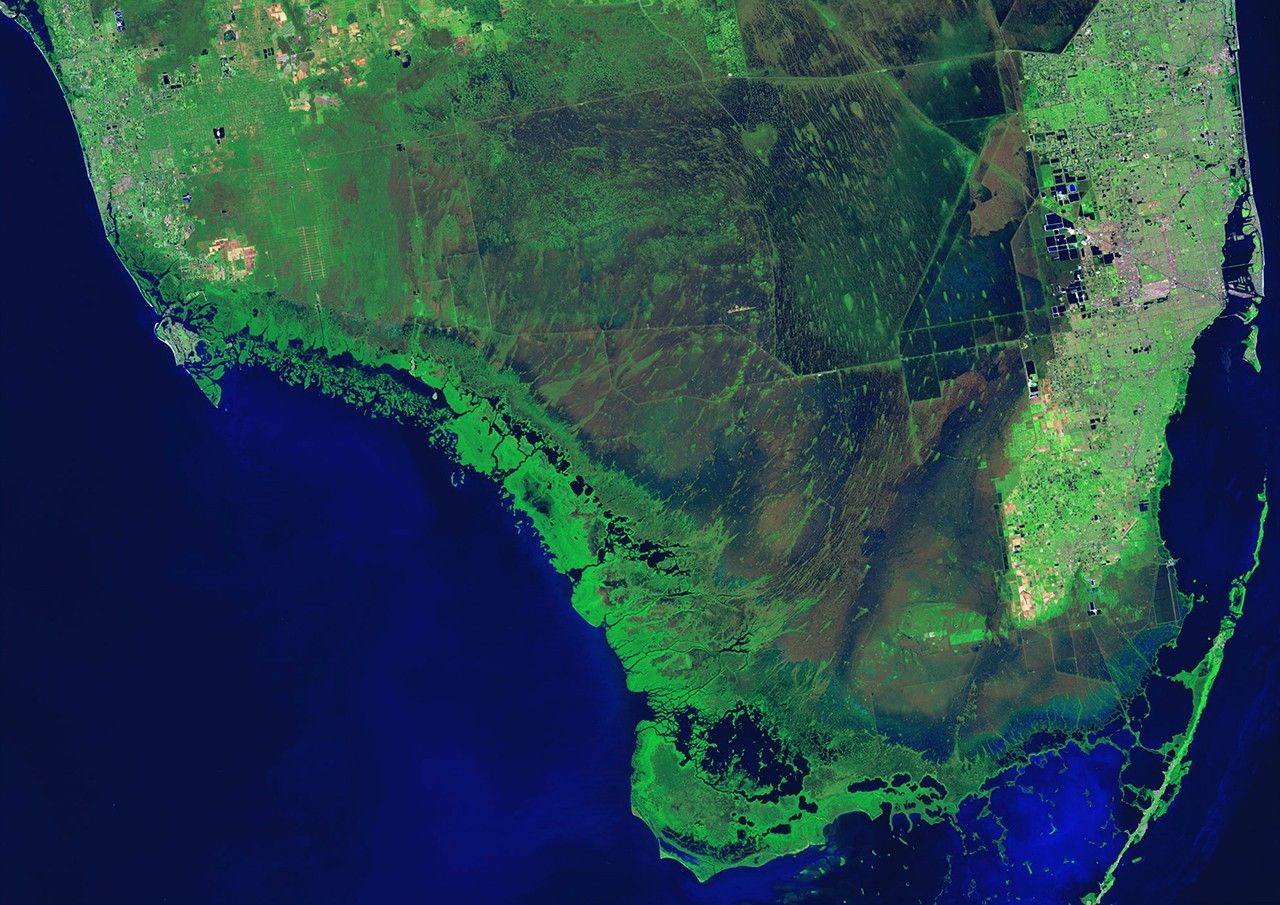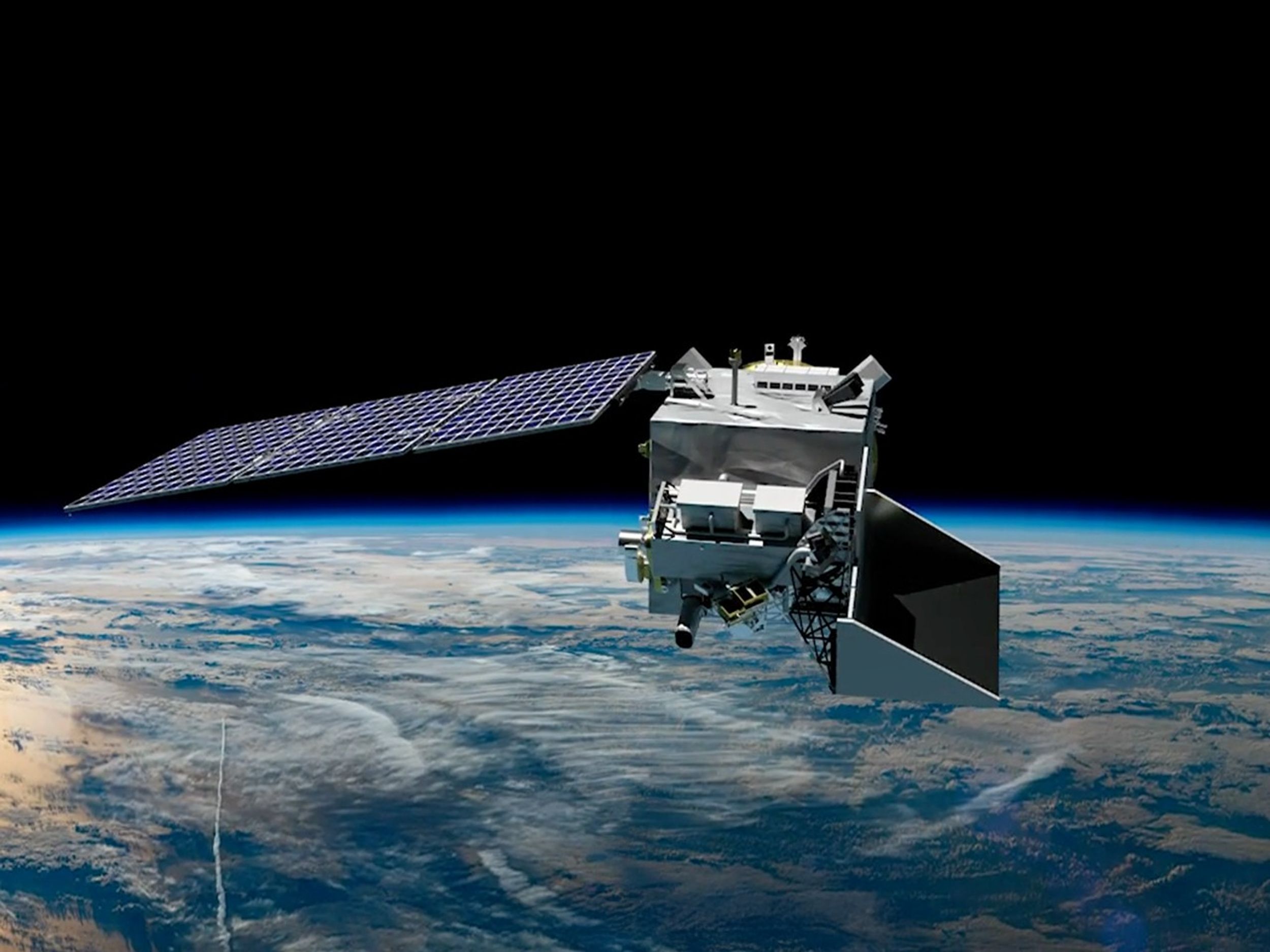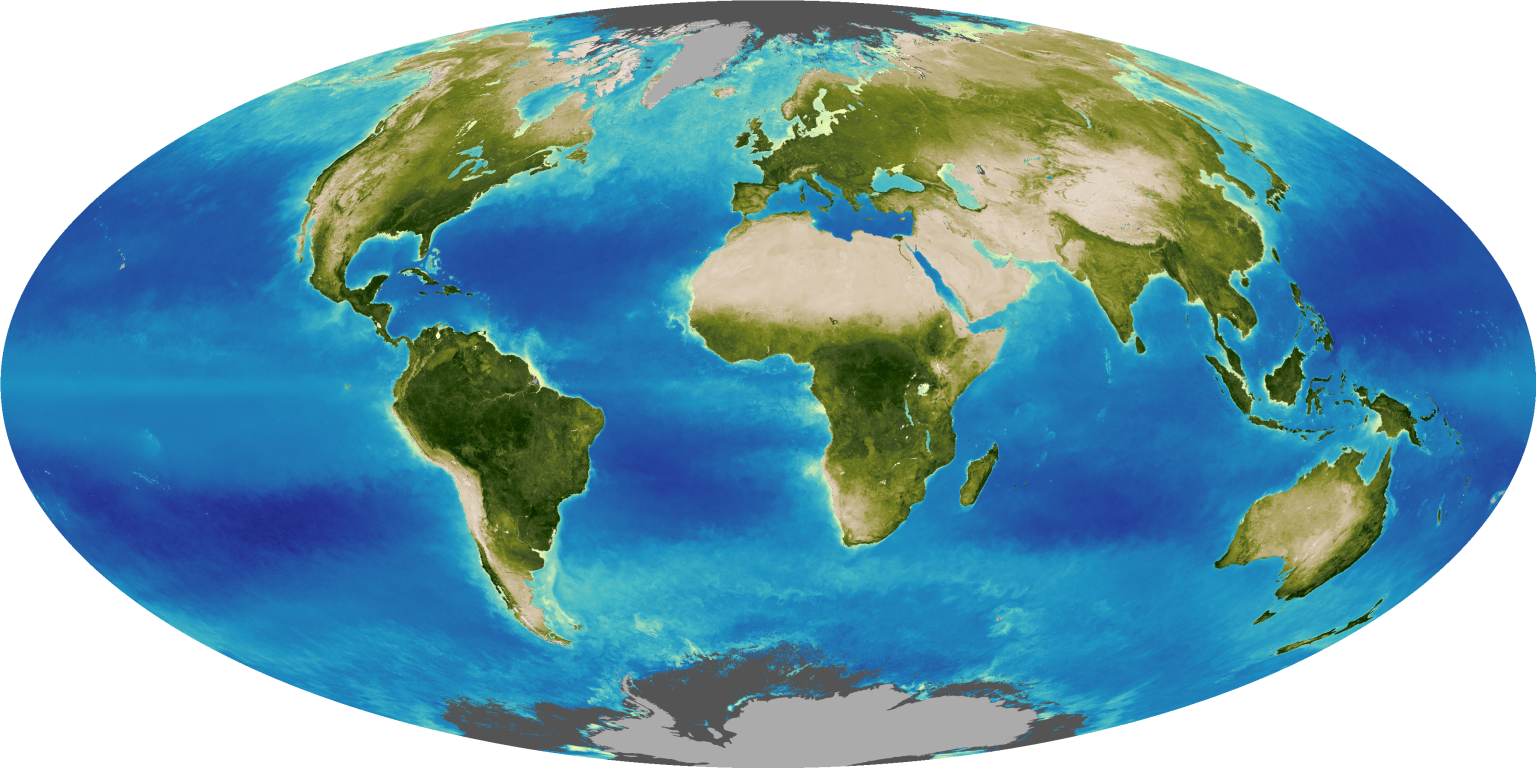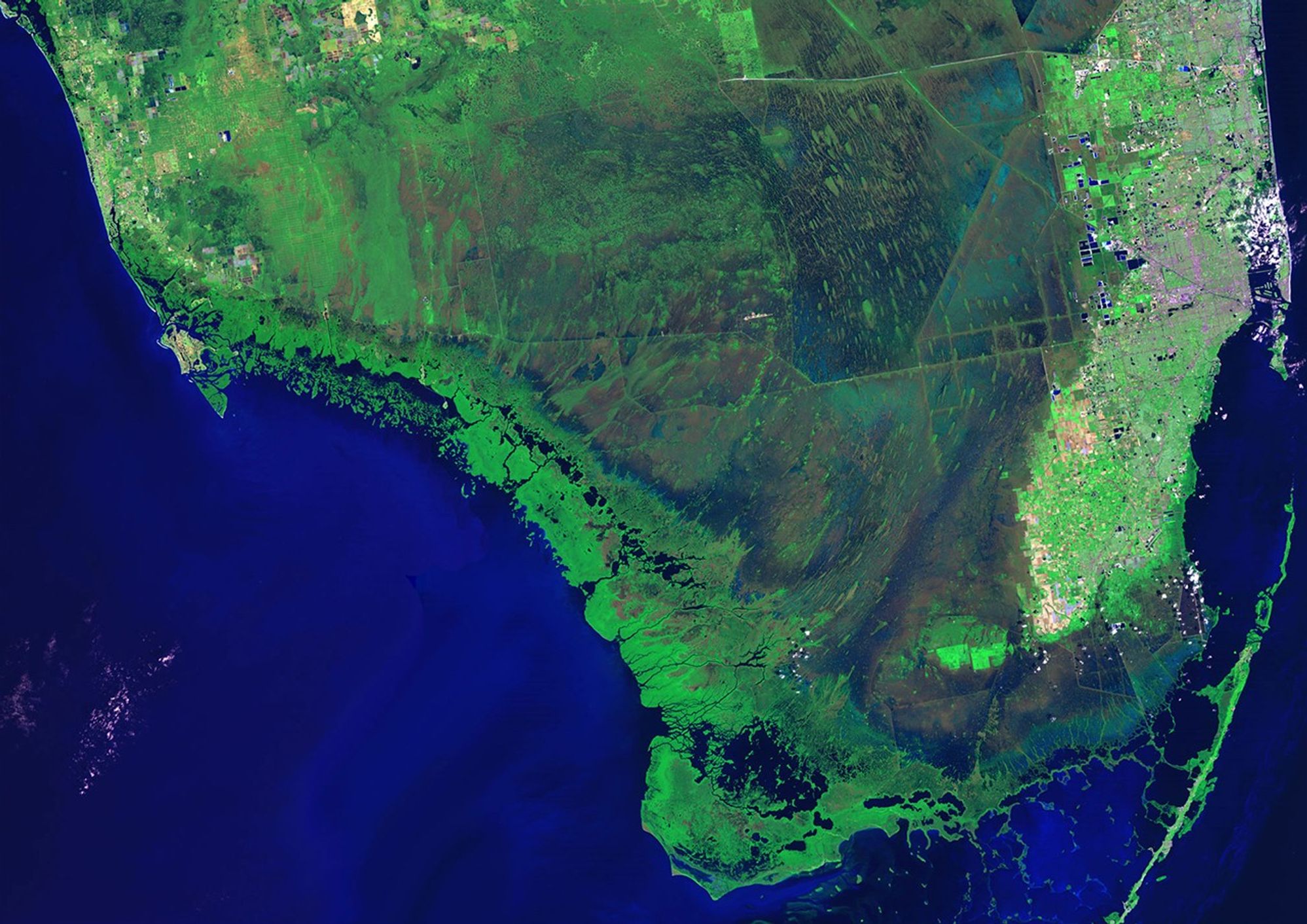
Florida's Everglades National Park contains the largest tract of wilderness east of the Rocky Mountains. It's an important wildlife habitat that also provides millions of people with water, cropland and pastures, and recreation. Urban development, recreation demands and storms have been hard on the ecosystem, and climate change poses a significant new challenge. In an effort to protect the Everglades, the U.S. Congress authorized the largest restoration project in American history in 2000. It includes buying land (over 207,000 acres to date), establishing large-scale aquifer storage systems and developing treatment marshes and water-flow channels. Each picture shown here is a mosaic of five scenes taken by satellite. Comparing 1986/1987 and 2010/2011 allows the project's staff to evaluate gradual changes in the fragile Everglades ecosystem. Images taken by the Thematic Mapper sensor onboard Landsat 5. Source: U.S. Geological Survey (USGS) Landsat Missions Gallery, "Monitoring the Everglades," U.S. Departmen
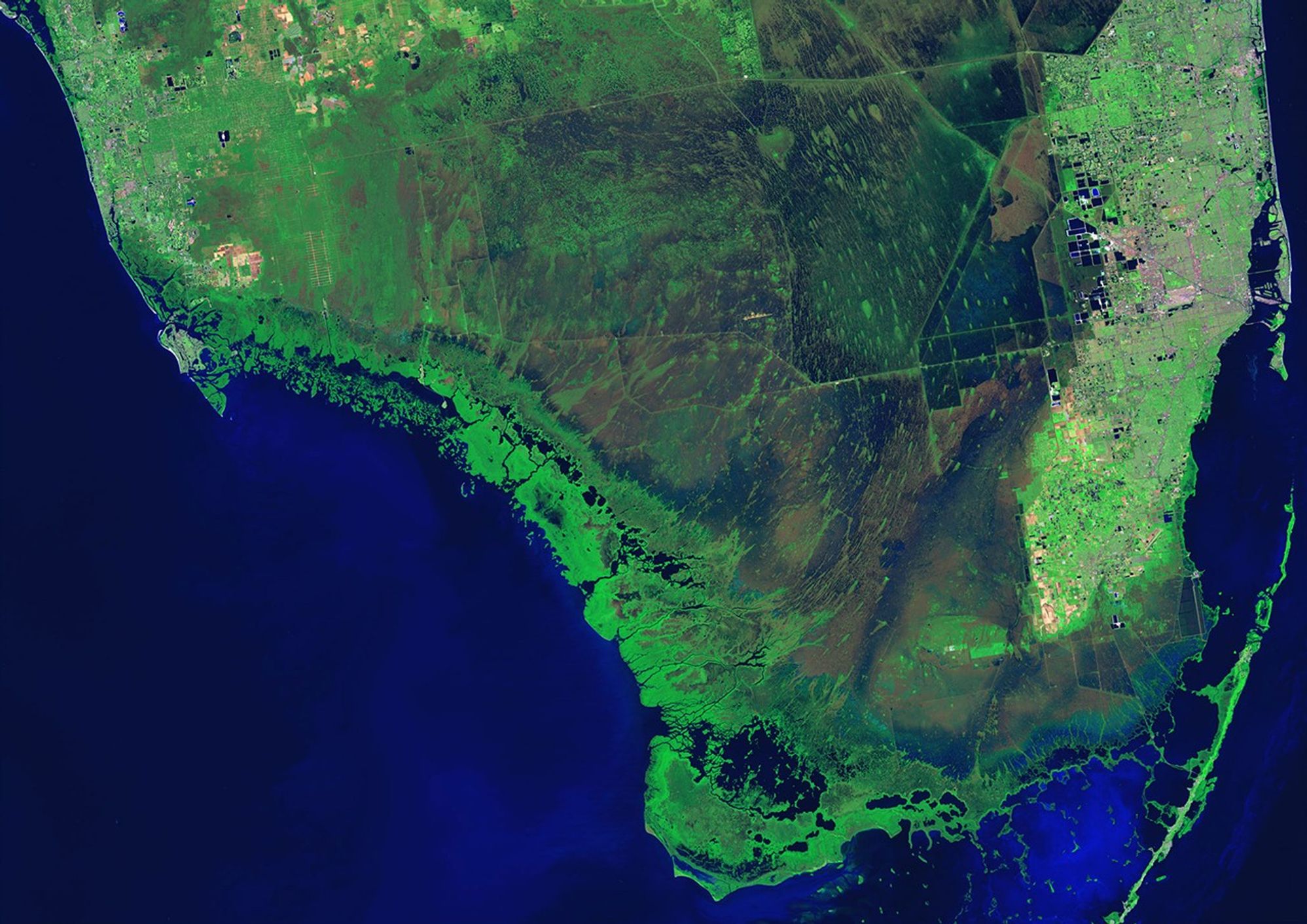
Florida's Everglades National Park contains the largest tract of wilderness east of the Rocky Mountains. It's an important wildlife habitat that also provides millions of people with water, cropland and pastures, and recreation. Urban development, recreation demands and storms have been hard on the ecosystem, and climate change poses a significant new challenge. In an effort to protect the Everglades, the U.S. Congress authorized the largest restoration project in American history in 2000. It includes buying land (over 207,000 acres to date), establishing large-scale aquifer storage systems and developing treatment marshes and water-flow channels. Each picture shown here is a mosaic of five scenes taken by satellite. Comparing 1986/1987 and 2010/2011 allows the project's staff to evaluate gradual changes in the fragile Everglades ecosystem. Images taken by the Thematic Mapper sensor onboard Landsat 5. Source: U.S. Geological Survey (USGS) Landsat Missions Gallery, "Monitoring the Everglades," U.S. Department of the Interior / USGS and NASA.

Florida's Everglades National Park contains the largest tract of wilderness east of the Rocky Mountains. It's an important wildlife habitat that also provides millions of people with water, cropland and pastures, and recreation. Urban development, recreation demands and storms have been hard on the ecosystem, and climate change poses a significant new challenge. In an effort to protect the Everglades, the U.S. Congress authorized the largest restoration project in American history in 2000. It includes buying land (over 207,000 acres to date), establishing large-scale aquifer storage systems and developing treatment marshes and water-flow channels. Each picture shown here is a mosaic of five scenes taken by satellite. Comparing 1986/1987 and 2010/2011 allows the project's staff to evaluate gradual changes in the fragile Everglades ecosystem. Images taken by the Thematic Mapper sensor onboard Landsat 5. Source: U.S. Geological Survey (USGS) Landsat Missions Gallery, "Monitoring the Everglades," U.S. Departmen

Florida's Everglades National Park contains the largest tract of wilderness east of the Rocky Mountains. It's an important wildlife habitat that also provides millions of people with water, cropland and pastures, and recreation. Urban development, recreation demands and storms have been hard on the ecosystem, and climate change poses a significant new challenge. In an effort to protect the Everglades, the U.S. Congress authorized the largest restoration project in American history in 2000. It includes buying land (over 207,000 acres to date), establishing large-scale aquifer storage systems and developing treatment marshes and water-flow channels. Each picture shown here is a mosaic of five scenes taken by satellite. Comparing 1986/1987 and 2010/2011 allows the project's staff to evaluate gradual changes in the fragile Everglades ecosystem. Images taken by the Thematic Mapper sensor onboard Landsat 5. Source: U.S. Geological Survey (USGS) Landsat Missions Gallery, "Monitoring the Everglades," U.S. Department of the Interior / USGS and NASA.
before
after
Before and After
Everglades National Park restoration, Florida
November 1986/1987 - November 2010/2011
Florida's Everglades National Park contains the largest tract of wilderness east of the Rocky Mountains. It's an important wildlife habitat that also provides millions of people with water, cropland and pastures, and recreation. Urban development, recreation demands and storms have been hard on the ecosystem, and climate change poses a significant new challenge. In an effort to protect the Everglades, the U.S. Congress authorized the largest restoration project in American history in 2000. It includes buying land (over 207,000 acres to date), establishing large-scale aquifer storage systems and developing treatment marshes and water-flow channels. Each picture shown here is a mosaic of five scenes taken by satellite. Comparing 1986/1987 and 2010/2011 allows the project's staff to evaluate gradual changes in the fragile Everglades ecosystem. Images taken by the Thematic Mapper sensor onboard Landsat 5. Source: U.S. Geological Survey (USGS) Landsat Missions Gallery, "Monitoring the Everglades," U.S. Department of the Interior / USGS and NASA.




























